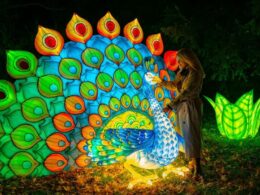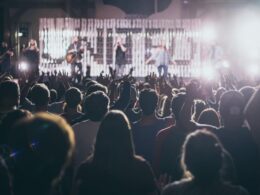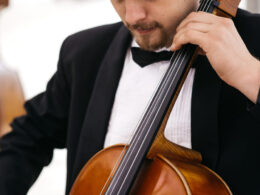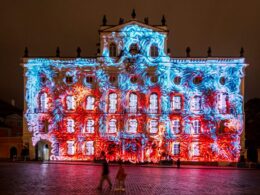Table of contents Show
Klausen Synagogue
Czech name: Klausová Synagoga
The largest synagogue in the Prague Jewish Town (Pražské Židovské město), the Klausen Synagogue, and the adjoining Old Jewish Cemetery, are prominent locations to see when visiting the former Jewish Ghetto. The Klausen Synagogue Prague as it is sometimes spelt stands as one of the few remaining examples of early Baroque architecture in the area and represents the enduring nature of the Jewish faith.Today, the synagogue serves as a part of The Jewish Museum in Prague, which preserves the rich history of the synagogue and educates its visitors on the foundations of Judaism and Jewish life.
Location & How to Get To The Klausen Synagogue Prague
The Klausen Synagogue is about a 5-minute walk from the Staroměstská Station. Staroměstská Station is serviced by the A metro line, the 17 or 18 tram, and 194 or 207 bus routes.
Klausen Synagogue Opening Hours & Entry
The Klausen Synagogue is open every day except for Saturdays and the Jewish holidays. The hours of operation are as follows:
1 January – 27 March 2020 9 a.m. 4.30 p.m.
29 March – 23 October 2020 9 a.m. 6 p.m.
25 October – 31 December 2020 9 a.m. 4.30 p.m.
24 December 2020 9 a.m. 2 p.m.
Jewish Synagogue Prague tickets
The Klausen Synagogue also referred to as Jewish Synagogue , Prague tickets prices differ according to category of individuals. Entrance fee is 350 CZK for adults and it covers all 5 Jewish Museum Synagogues, Ceremonial Hall, the Old Jewish Cemetery and Robert Guttmann Gallery.
Kids under 6 are free, children 6-15, and students under 26 are 250 CZK.
What to Do & What to See at the old Jewish Synagogue Prague
The Old Jewish Synagogue Prague offers exhibits for those interested in learning about the Jewish faith and the history of the Jewish people. The main exhibition explains the Jewish faith’s primary sources and their importance in Judaism: the Torah (the Hebrew Bible) and its associated ornaments and the Talmud (a collection of Rabbis’ interpretations of the Torah). Visitors can also visit the jewish museum of the Spanish synagogue which is the newest Synagogue in the Old Jewish town as it was built in 1868 for the local reform congregation.
Along the eastern wall of the Klausen Synagogue prag, an exhibit explains the Synagogue ’s interior furnishings, such as the Baroque Holy Ark, which is where the Torah is stored when not being used during services. This exhibit delves further into the importance of the Holy Ark and other accessories of the Synagogue . Across from the Holy Ark, along the western wall, a different exhibit explains the purpose and meaning of the Jewish holidays Hanukkah and Purim. Information about other holidays and festivities, as well as manuscripts and printed books, are displayed around the perimeter of the main hall.
The second part of the exhibit focuses on Jewish life and explains the milestones and ceremonies that occur in the Jewish tradition. The exhibition explains what Jewish home life is like and teaches about the rituals related to birth and circumcision, reaching adulthood and bar mitzvahs, marriage and divorce, and finally, illness and death. The exhibits continue to the adjoining Ceremonial Hall and out to the Old Jewish Cemetery from the Klausen Synagogue.
History of the Klausen Synagogue
The old Jewish Synagogue Prague was originally built in 1570 by a wealthy businessman and philanthropist named Mordecai Meisel, the Klausen Synagogue was constructed along with two other small buildings, including a Talmud school (which is called a yeshiva) and a hospital, to honor Emperor Maximillion II‘s visit to the Jewish Town in 1573. This cluster of small buildings was given the name Klausen, a German translation of the Latin word claustrum, meaning “small buildings.” This collection of buildings, specifically the synagogue and yeshiva, was well known for the high-profile rabbis that practiced and taught there, including the renowned Rabbi Loew, who is buried in the adjacent Old Jewish Cemetery.
Unfortunately, in 1689, a fire broke out in the ghetto, destroying much of the neighborhood, including the three buildings that made up the Klausen Synagogue complex. However, after this tragedy, Rabbi Solomon Chalish Kohen led the Synagogue ’s reconstruction on the three buildings’ original site. The construction of the new Klausen Synagogue was completed in 1694.
After its reconstruction, the Klausen Synagogue became the second most popular Synagogue and one of the largest structures in the Jewish Ghetto. During this new age for the Synagogue , it became a focal point in the Jewish community. A baroque style Holy Ark was added in 1696, and the Prague Burial Society also used the rebuilt Synagogue as their main house of prayer and to prepare the recently deceased for burial. The entire area that contains these Synagogues as well as the Spanish Synagogue Jewish Museum in Prague as well as the Jewish cemetery is known as Prague Synagogue’s Jewish Quarter.
Klausen Synagogue Prague unchanged and received a refurbishment from 1883-1884. These refurbishments gave the Klausen Synagogue its contemporary look and style. During this time, the entire ghetto was met with urban renewal, and much of the Baroque architecture was removed. After this reconstruction period, the Klausen Synagogue became the only example of the Baroque architecture that used to be common in the Jewish Town.
During World War II, Klausen Synagogue was used as a storage facility; however, its interior was destroyed by the Nazis. Following the war, refurbishments occurred throughout the remainder of the 20th century. Now, the Klausen Synagogue is a part of the Jewish Museum in Prague and offers exhibitions about Jewish life and the Jewish faith.





